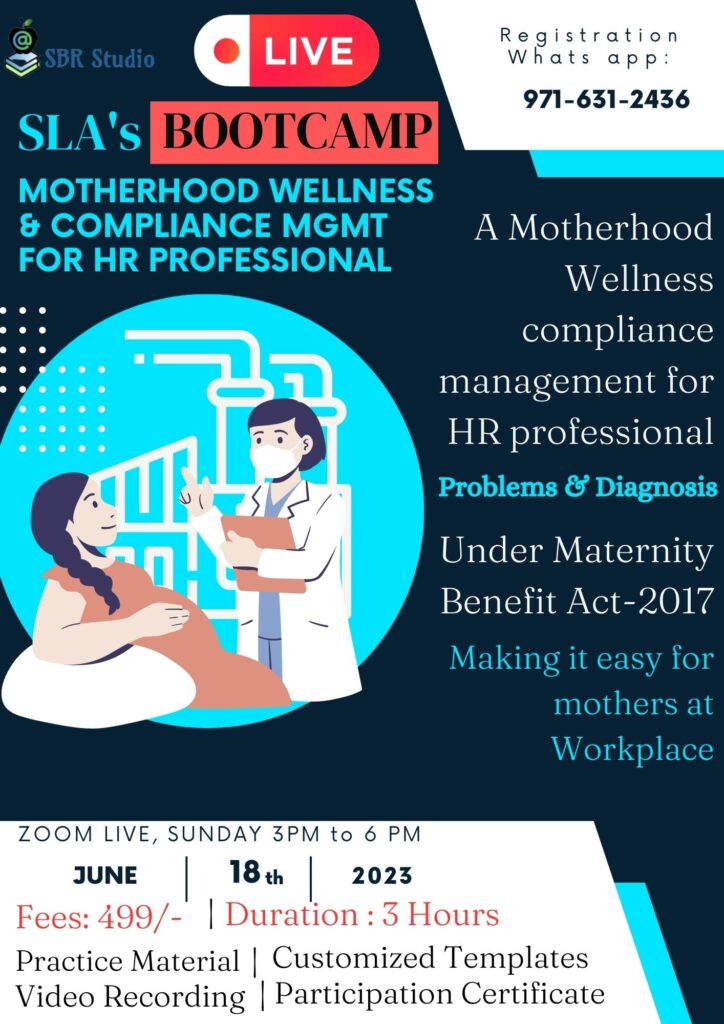Why Maternity leave should be increased to nine months from six months?
Why Maternity leave should be increased to nine months from six months?
FICCI Ladies Organisation (FLO), the global care economy, which includes both paid and unpaid work connected to caregiving such as childcare, elder care, and household duties, is a crucial sector that promotes economic growth, gender equity, and women's empowerment.

Why Maternity leave should be increased to nine months from six months?
Maternity benefits enable working mothers to maintain their dignity as mothers while at work. The Maternity Benefit Act of 1961 facilitates maternity benefits for both the private and public sectors’ employees.
Last month, NITI Aayog member V K Paul stated that both the private and governmental sectors should consider increasing maternity leave for female employees from six to nine months.
The Maternity Benefit (Amendment) Bill, 2016, was passed by Parliament in 2017 and increased paid maternity leave to 26 weeks from 12 weeks previously.
“Both the private and public sectors must work together to consider increasing mothers’ maternity leave from six to nine months,” the FICCI Ladies Organisation (FLO) said in a statement quoting Paul.
According to the statement, Paul said the private sector should help the NITI Aayog to design the comprehensive care of the children by opening more crèches for children for better upbringing as well as doing what is necessary for the elderly care.
“As millions of care workers will be needed in the future, we have to develop systematic soft and hard skilling training,” Paul added.
According to Sudha Shivkumar, president of the FICCI Ladies Organisation (FLO), the global care economy, which includes both paid and unpaid work connected to caregiving such as childcare, elder care, and household duties, is a crucial sector that promotes economic growth, gender equity, and women’s empowerment.
Care work is economically valuable but underestimated globally, she adds.
“The biggest gaps in India are that we lack a system for properly identifying care economy workers, and India’s public spending on the care economy is extremely low in comparison to other nations,” she said.
Quick Capstone of Maternity Legislation
- Under section 5 of the Maternity Benefit Act of 1961, as amended in 2017, the government has enhanced paid maternity leave from 12 to 26 weeks, with no more than eight weeks preceding the scheduled delivery date.
- Depending on the nature of the task entrusted to a woman, Section 5(5) of the Act allows her to work from home for as long as she and her employer mutually agree.
- Maternity leave for children older than the first two will remain at 12 weeks.
- The 2020 Social Security Code includes provisions for increasing paid maternity leave from 12 weeks to 26 weeks, mandating crèche facilities in enterprises with 50 or more employees, allowing women to work night shifts with proper safety precautions, and other provisions.
How can HR make it easier for conceived working women to facilitate their motherhood health in the workplace under various laws?
How to comply with motherhood wellbeing regulations, a tough and disliking task for human resource specialists and organisation.
Register for “Motherhood Wellbeing and Compliance management Bootcamp”

- Vikram Solar Appoints Arun Mittal to Lead its Energy Storage Arm - December 3, 2025
- Preventive Healthcare Emerges as a Strategic Investment | Howden Global Employee Benefits Report - November 18, 2025
- Apollo Tyres Ltd and KIIT Announce India’s First Strategic Academic Collaboration - November 18, 2025








